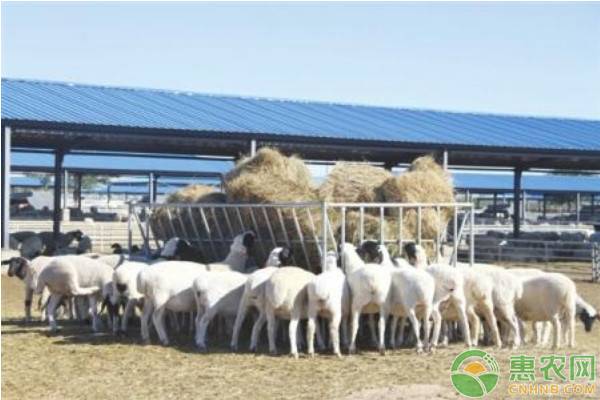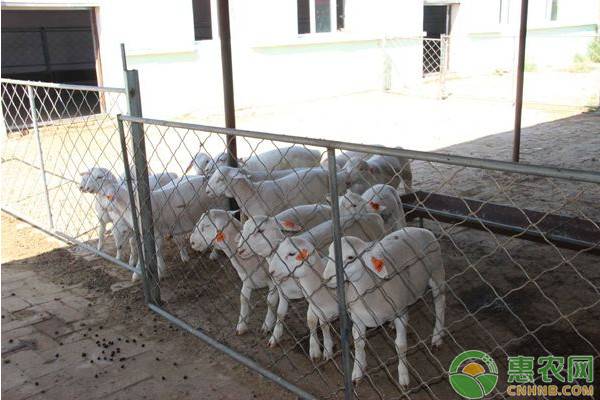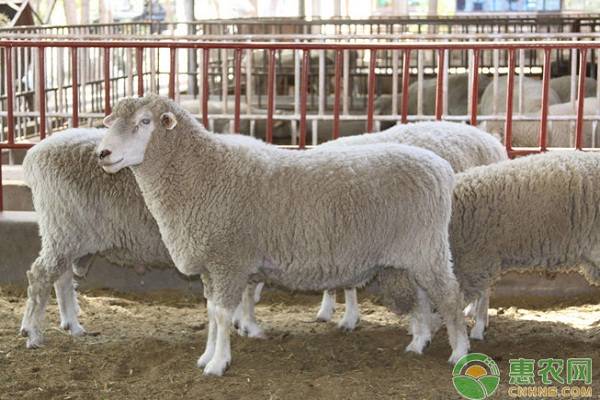Causes of sheep disease and its prevention and treatment measures
Many farmers' friends want to breed meat sheep when they see the price of mutton rise. In fact, lambs are not so good. In the early stage of breeding, most people don't know why a good sheep is sick when it comes to illness. This is mainly related to the lack of management work in the weekdays. Let's take a look at the cause and disease prevention of sheep disease. 1 Causes of sheep disease Improper feeding methods can cause sheep to become ill, which in turn affects the quality and quality of meat products, causing unpredictable hazards. Therefore, it is extremely important to understand the causes of sheep disease. 1.1 Environmental health issues The environment in which sheep grow is related to whether sheep can grow healthily, so the growing environment is one of the main factors that cause sheep to get sick. If the sheep is in an inferior environment for a long time, it will lead to a decline in its immunity, causing the sheep's resistance to some diseases to decline, resulting in an increase in the incidence of sheep and damage to the body of the sheep. 1.2 Improper management causes disease If the environment is an external cause, improper management is the internal cause. 1) In the case that the sheep is sick or other conditions are unclear, many farmers will blindly use drugs to try to cure some abnormal behaviors of the sheep, and then these unscientific practices will increase the incidence of sheep. 2) Due to the lack of management experience of the management staff, it leads to some unexpected situations without pre-planning, which can not cause the diseased sheep to be controlled and isolated in time, leading to infection, which will cause more healthy sheep to become sick, not only for the health of the sheep. It is a huge hazard and has caused great losses to the breeding industry. 3) There is no disinfection treatment for the sheep house, and the garbage disposal of the sheep house is not in place, which will also bring disease threat to the sheep, resulting in an increased probability of disease in the sheep. 1.3 Improper medication Drugs on the market are extremely confusing, and some manufacturers specialize in the production of counterfeit drugs. There is a saying that "grasping the soil is medicine" sounds ridiculous, but it is true. Many farmers have obtained correct diagnosis after the sheep have problems, but they have died because of the use of fake drugs or poor quality drugs. 1.4 improper feeding Sheep breeding density is too large, poor ventilation, inadequate water supply, uneven feeding, free feeding time, drinking ice slag, etc., can cause sheep disease. Insufficient feed nutrition, lack of vitamins, trace elements, protein, fat and sugar will cause corresponding deficiency. However, some nutrients and excessive trace elements can cause poisoning. In addition, feeding mildewed feed (hay, silage and mildew) can also cause disease. 2 disease prevention and control measures 2.1 Common diseases of sheep 2.1.1 Cold The lamb's immunity at birth is relatively poor, which will cause the bacteria to invade the sheep. In order to prevent colds, the sheep should dry the mucus on the sheep in time after delivery, and also ensure the temperature of the sheep house to prevent the sheep from catching a cold. Moreover, it is necessary to ensure that all the nursing work after the birth of the lamb is in place, and timely take treatment measures for the cold symptoms of the sheep. 2.1.2 Lamb dysentery The disease is highly prevalent in the 7 months postpartum lamb, the main symptoms are not eating milk, diarrhea, abnormal color of stool. The red color of the stool means that the lamb is very ill and has a life-threatening risk. The prevention and control of diarrhea in lambs is mainly treated with chloramphenicol to ensure the health of the lambs. 2.1.3 white muscle disease The disease is a case of sheep's lack of vitamin E and selenium, which causes myocardial necrosis and dyskinesia. For this, sodium nitrite solution was used for treatment. 2.1.4 anthracnose Mainly acute, the performance is more sudden. Mainly manifested by physical convulsions, trembling, difficulty breathing, accompanied by molar symptoms, elevated body temperature, anal red and black blood, can lead to rapid death of sheep. The incidence is mainly reduced by injection of vaccines, and the prevention and treatment of such diseases is mainly regionalized treatment. After the sheep have died of illness, they must also be treated with corpses. After the diseased sheep is treated, it is necessary to prevent other sheep. The main practice is to carry out disinfection treatment. If the diseased sheep is subacute, it can be treated with penicillin. 2.1.5 sheep rapid disease This disease is similar to the anthrax illness. After the sheep die, the body will quickly decay and swell. This disease can also be treated with penicillin. At the same time, the sheep house should be disinfected and protected from cold to ensure the temperature of the house. 2.1.6 Alpaca The disease is short, and the sick sheep will lie down and fall out of the group, showing discomfort and weakness, and the sick sheep will die in a short time. The main control measures can be referred to the anthrax and the rapid treatment of sheep with penicillin. 2.1.7 Lamb paratyphoid After getting sick, the sick sheep will lack appetite, excretion will stink, and the sheep will be apathetic and die within a few days. This kind of disease mainly occurs in lambs. The prevention and treatment measures are mainly to eat colostrum in time after the birth of the lamb. Pay attention to keeping the lamb warm, and isolate the sick sheep in time. The diseased sheep can be treated with drugs. 2.2 Preventive measures 2.2.1 The location of the sheep house is scientific and reasonable In the selection of sheep houses, the appropriate temperature, shading and ventilation needs for sheep growth should be considered. Only scientific site selection assessment can be carried out. After site selection, the breeding of pathogens can be reduced, and the sheep's incompatibility can be reduced, thus greatly reducing the sheep. The incidence of disease. 2.2.2 Strengthening quarantine In the breeding process of sheep, the principle of prevention-oriented and comprehensive prevention should be adopted to strengthen the quarantine of sheep diseases, timely and timely vaccination of sheep, improve the immunity of sheep and reduce the incidence of sheep disease. 2.2.3 Improve the disinfection work of the sheep house Ventilation can only reduce the production of virus. In order to effectively control the occurrence of sheep disease, it is necessary to disinfect the sheep house on time, mainly combining physical disinfection, chemical disinfection and biological disinfection to minimize the proliferation of viruses and germs. 3 sheep feeding management measures 3.1 Main points of feeding management of different types of sheep 3.1.1 Ram Management The ram should ensure adequate nutrition during the breeding date to ensure that the ram's appetite is normal, thus ensuring the ram's sexual function is strong, increasing the amount of semen, thereby improving the sheep's breeding success rate. During the breeding period, the ram should be fed a juicy feed to ensure the protein supply of the ram. 3.1.2 Ewe management Feed different feeds at different physiological stages of the ewes. During the preparation of breeding, it is basically after weaning, at this time in the vigorous growing season of forage, so the grass is generally not added, but the ewes are thrown to the pasture for grazing. Replenishing grass before breeding can promote ovulation. Ewes in gestation require a large amount of forage to supplement their nutrition. This period is during the peak season and a small amount of feed is required after grazing. In the late lactation period, the lambs will have their own grazing. The ewes only need to be properly fed, and the feeding can be appropriate. 3.1.3 Lamb Management Young lambs are mainly breastfeeding and do not need to feed. When the lamb is slightly larger, it can be weaned properly and mixed with feed. After the lamb is completely weaned, it is necessary to feed the feed several times, but to ensure the freshness and digestibility of the feed. 3.2 feeding management precautions 1) In the process of feeding the ram alone, it is necessary to regularly massage the testicles of the rams. The body quality of the rams should be strictly controlled, and the rams should be cut and modified, and the rams should not be fed too much before breeding. 2) Always check to prevent accidents that are prone to occur. 3) To protect the ewes during pregnancy, it is forbidden to capture, prevent accidents, and eat hot grass. 4) Pay attention to the care of the ewe after re-reproduction, and do a good job in breast examination of the ewe. 5) Strengthen the care of the new lambs, ensure that the lambs eat colostrum, carry out artificial feeding or find other sheep to feed, pay attention to the health of the lamb's breast milk. 6) Ensure the sanitation of the sheep house, pay attention to the safety of grazing, and cut the wool and repair the hoof. 3.3 reproduction Sheep breeding is carried out in autumn and winter, and breeding male and female ewes should not be prematurely bred. Although the ram is not obvious, the autumn is an orgasm, and the best breeding age of the ram is 1.5 years old. The estrus breeding period of the ewes is mainly from August to October. Although it can be estrus in April-June, the breeding of the ewes should be based on the breeding cycle. The estrus of the ewes is generally about 18 days, each time up to 30 hours. Breeding is good time to ensure normal embryos. 3.4 Feed cost control Many farms mostly use silage or grow grass. Silage contains a large amount of organic acids and has a laxative effect. It is not suitable for sheep with gastroenteritis and ewes. The acidity of silage is too large, which will affect the quality of the semen of the breeding stock. Silage treated with inorganic acid additives can affect the metabolism of minerals in animals and produce a negative balance of calcium. Therefore, calcium should be supplemented when feeding such silage, and most of the captors who use silage to feed sheep ignore this. point. In addition, many farmers have insufficient understanding of silage, causing mildew in silage. At the same time, the waste rate of silage and pasture feeding sheep is extremely high, which greatly increases the cost. The development of a variety of crop straws and agricultural and sideline products to produce mixed rations, not only low cost, but also very good results, sheep's slaughter cycle is shortened, and the meat is more effective. At the same time, after numerous experiments, the length and shortness of the straw smashing is well grasped, which is beneficial to the ruminating of the sheep and eliminates the picky eating phenomenon, so the waste rate of the feed is controlled below 1%. For the wonderful pictures and hot comments about the causes and prevention measures of sheep disease, you may be interested in the following recommended contents. Welcome to read. Dried Seaweed Salad,Dry Seaweed For Soup,Organic Dried Kombu,Dried Kombu Seaweed DALIAN HAIBAO FOODS CO., LTD. , https://www.haibaoseafoods.com


